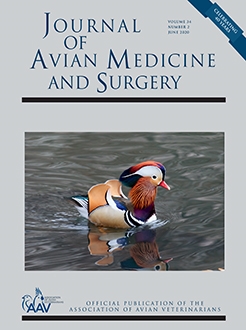A juvenile yellow-tailed black cockatoo (Calyptorhynchus funereus) was presented with paresis of the right wing, ptosis, and miosis of the right eye; feather erection of the right side of the head and neck; and a penetrating injury over the right pectoral muscle. Temporary reversal of ptosis, miosis, and feather erection after administration of phenylephrine drops confirmed a diagnosis of Horner syndrome. Computed tomographic imaging revealed a fractured rib, traumatic lung lesions, and subcutaneous emphysema. The right-sided Horner syndrome and wing paresis were attributed to a sympathetic nerve trauma of the eye and feathers and to the brachial plexus, respectively. This report describes the diagnosis and resolution of ptosis and miosis within 8 weeks and recovery of feather symmetry and wing function within 11 weeks of the cockatoo's initial presentation with a conservative-management treatment plan.
How to translate text using browser tools
21 July 2020
Horner Syndrome With Ipsilateral Wing Paresis in a Wild, Juvenile Yellow-Tailed Black Cockatoo (Calyptorhynchus funereus)
Jennifer M. McLelland,
David J. McLelland,
Nicola Massy-Westropp,
Ben Wigmore,
William K. Loftus,
R. Anthony Read
ACCESS THE FULL ARTICLE
Avian
brachial plexus
Calyptorhynchus funereus
cockatoo
computed tomography
Horner syndrome
sympathetic





